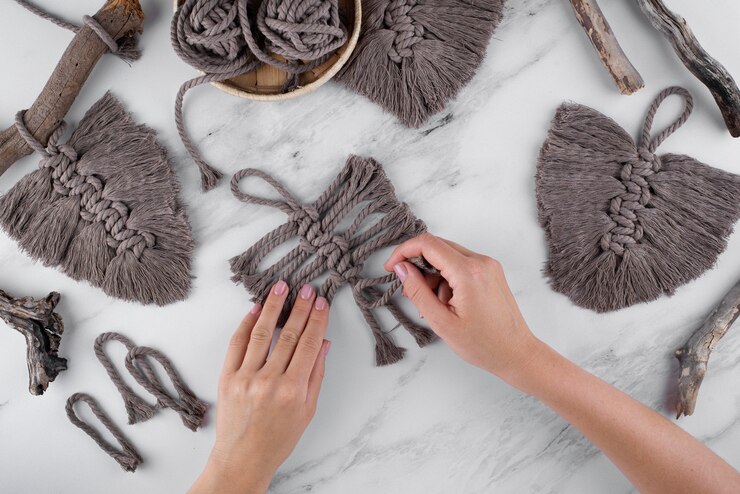I’ve been crocheting for over forty years, and during that point, I’ve continually worked from crochet patterns. It wasn’t till recently, however, that I decided to start growing styles for my very own crochet designs.. What higher way to mix my love of crochet with my years of revel in as a technical creator. However you don’t have to be a technical author as a way to create a properly-formatted and easy-to-observe pattern, and i’m going to reveal you how.
My step-with the aid of-step guide for creating crochet styles includes those six steps:
Step 1: observe Commercially-posted Crochet patterns.
Step 2: Create a “word-Taking” sample Template.
Step 3: Take Copious Notes on your Template.
Step 4: Formalize Your Notes into a Crochet pattern.
Step 5: take a look at Your Crochet pattern
Step 6: Create a “digicam-geared up” model of Your sample.
Now that you have an idea of what’s worried in developing crochet patterns, it’s time to get started.
**be aware: I’m assuming that you know the way to layout the piece for that you need to create the sample, along with a way to grade the sample for one of a kind sizes if you’re growing one for a garment. Crochet design is beyond the scope of this newsletter.
For the ones of you who’d like a few assist with getting thoughts on what to design, setting the ones thoughts on paper, after which translating them right into a crocheted piece,
Step 1: have a look at Commercially-published Crochet patterns
most of you have got in all likelihood already labored from a commercially-posted crochet pattern. As a end result, you have got pretty top idea of the way they are formatted and the unique language they’re written in. But, there are crochet designers out there who are excellent at growing crocheted hats, handbags, afghans and clothes with out the usage of a sample and do it very well.
In case you’ve in no way crocheted from a sample, I propose you find some easy patterns to paintings from and take time to finish them so you get a feel for the way they are laid out and the language wherein they may be written.
Many yarn companies along with Lion emblem, Berrocco and Plymouth have free crochet patterns that you could download from their internet web sites.
It’s additionally an awesome concept to study styles in such magazines as Interweave Crochet and Crochet these days to get an idea of the way they’re formatted.
If you’ve already been operating from patterns for a while, then you definitely’re beforehand of the sport.
Components of a Crochet sample even though there can be slight variations from one publisher to the subsequent, maximum industrial crochet styles follow a selected layout. You’ll find the subsequent sections in most business patterns in the marketplace today, regularly in 3 wonderful components:
part 1: sample Preliminarie identify of the pattern, designer, and picture
This section is pretty self-explanatory, telling you the name of the pattern, who designed it (that could be you!), and a picture of the finished item.
Notes:
This section is often protected so you can supply the crocheter additional statistics this is tough to carry in the line-by using-line commands or that can need extra rationalization than the line-by way of-line instructions can offer.
Length
If the pattern is for a garment, there could be a listing of the sizes (e.G., Small, Medium, huge) wherein the piece can be made. Those sizes are critical because there can be modifications inside the variety of stitches inside the basis chain , as well as changes inside the wide variety of stitches and rows to be worked, relying on the dimensions a crocheter desires to make. Adjustments for sizes which are large than the smallest length are blanketed in parentheses.
Completed Measurements
This phase affords the scale in inches and regularly centimeters (cm) of the finished piece.
Substances protected here are the yarn, hooks, and different elements (e.G., tapestry needles, stitch markers) wished to complete the project. Gauge this is a pretty vital segment and is typically protected in most patterns. It presents the wide variety of stitches and rows that need to be crocheted, generally within a 4-inch rectangular, if you want to create a chunk that has the scale listed in the “finished Measurements” segment of the sample.
Element 2: pattern instructions commands:
that is the “guts” of the sample, including a row-by using-row (or round-by using-spherical for crocheting within the round) listing of commands for crocheting the object. Those instructions regularly seem like hieroglyphics to starting crocheters, however that is due to the fact they may be written as succinctly as feasible, making use of abbreviations and special symbols that your target audience will want if you want to “translate.” all of the abbreviations and emblems used within the sample are typically spelled out within the “Abbreviations” section.
If the crocheted object is made of a number of portions (e.G., a Sweater Left front, proper front, Sleeves), then each piece may have its personal sub-phase of instructions that is in reality marked as such.
Part three: completing
This phase affords records wanted to finish the sample.
Meeting: If the object being crocheted consists of a couple of pieces, this segment will describe how to placed them together.
Any other steps required to complete the object (e.G., how to crochet edgings, in which to stitch on buttons, care instructions) are blanketed on this a part of the sample.
Schematics: Many garment and different kinds of styles will include a schematic drawing of the object that offers precise sizing information in inches and centimeters. This data, along side the pattern gauge will make sure that the completed piece has the size known as for in the finished Measurements segment of the pattern. (observe: The Schematics segment can also seem somewhere close to the start of the pattern.)



